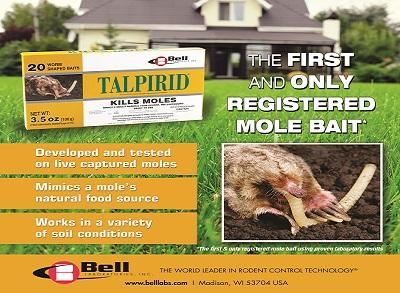
To the untrained eye, moles and voles are the same. Both spend most of their time underground and can deliver serious damage to lawns, gardens, and other landscapes. That is where the comparisons stop. To make sure you are addressing the correct issue, use the below tips so you can effectively identify and eliminate your mole or vole issue.
Burrows, Runways, and Mounds
Moles and voles traverse the landscape very differently. Voles only navigate above ground, while moles only tunnel below the surface. Despite their differences, both leave distinct evidence of their travel called runaways.
Vole Burrows, Runways, and Mounds
Well-defined, 2-inch wide, aboveground paths created by voles scurrying across the surface of the grass between burrows and their food sources. Vole burrows have clearly defined entrance and exit holes.
Mole Burrows, Runways, and Mounds
Wide paths of protruding dirt that give the landscape a slightly elevated appearance. Moles can extend their tunnels by more than 100 feet per day.
Moles also create volcano-shaped mounds, or mole hills, of loose dirt by kicking dirt out of their tunnels signifying the start of a new tunnel.
Physical and Behavioral Characteristics
When it comes to physical appearance, moles and voles are unidentical. Voles look like field mice, while moles are physically dissimilar to every other animal.
Vole Physical Traits:
Voles spend time above and underground. Their sharp incisor teeth are the ideal tool for gnawing through the shells of seeds, sturdy roots, and other vegetation.
- → Small Eyes
- → Small Ears
- → Sharp incisor teeth
- → Blunt noses
- → Sturdy round bodies
- → Short tails
- → Thick fur
Mole Physical Traits:
Moles live underground spending little time aboveground. Although they are nearsighted and colorblind, moles’ eyes are exceptionally good at detecting light. Their long noses smell in stereo helping them quickly locate prey like grubs and earthworms and avoid predators.
- → Tiny eyes,
- → Long noses
- → large shovel-like feet with large claws
- → Thick fur
Moles Behavioral Characteristics:
- → Damage landscapes and gardens
- → Don’t enter buildings
- → Won’t leave burrows unless absolutely necessary
- → Moles are insectivores
- → Consume food equivalent to 80%-100% of their own body weight each day
Voles Behavioral Characteristics:
- → Damage plants, fruit trees, and landscapes
- → Occasionally enter buildings
- → Only leave burrows for 10 minutes at a time
- → Voles are rodents
- → Active year-round
Personalizing your Pest Management Program
Vole Pest Management Program:
- → Practice exclusion at the ground level to keep voles out of buildings
- → Remove any excessive landscaping and weeds that may be providing abundant food or cover
- → Both traps and rodenticide will be required, due to their quick reproduction cycles
- → Place Traps & bait stations near shrubbery, along runways, and near burrow openings
- → Use ZP rodent bait. Let it fall between blades of grass, and do not apply in less than 30-day intervals
- → P.C.Q® Pro pellets are great for meadow & pine voles
- → Contrac® Blox or Contrac® Soft bait can be used for voles, when bait is placed in a tamper-resistant bait station
Mole Pest Management Program:
- → Focus your attention on trees, landscaping, and flower beds
- → Pay special attention to fence lines and driveways, this is where you might find mole ‘super-highways’, which are frequently traveled by more than one mole
- → Poke holes into mole runways, if the holes are plugged when you return the next day, it is an active mole runway
- → Use Talpirid® mole bait and traps

